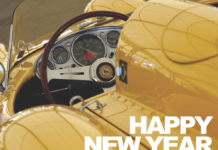We set out on the “Road of the End of the World” to explore the secrets of Patagonia – the land of explorers and home of the wind. Our companion is a Panamera, powered by water and air. This is the dawn of a new era.
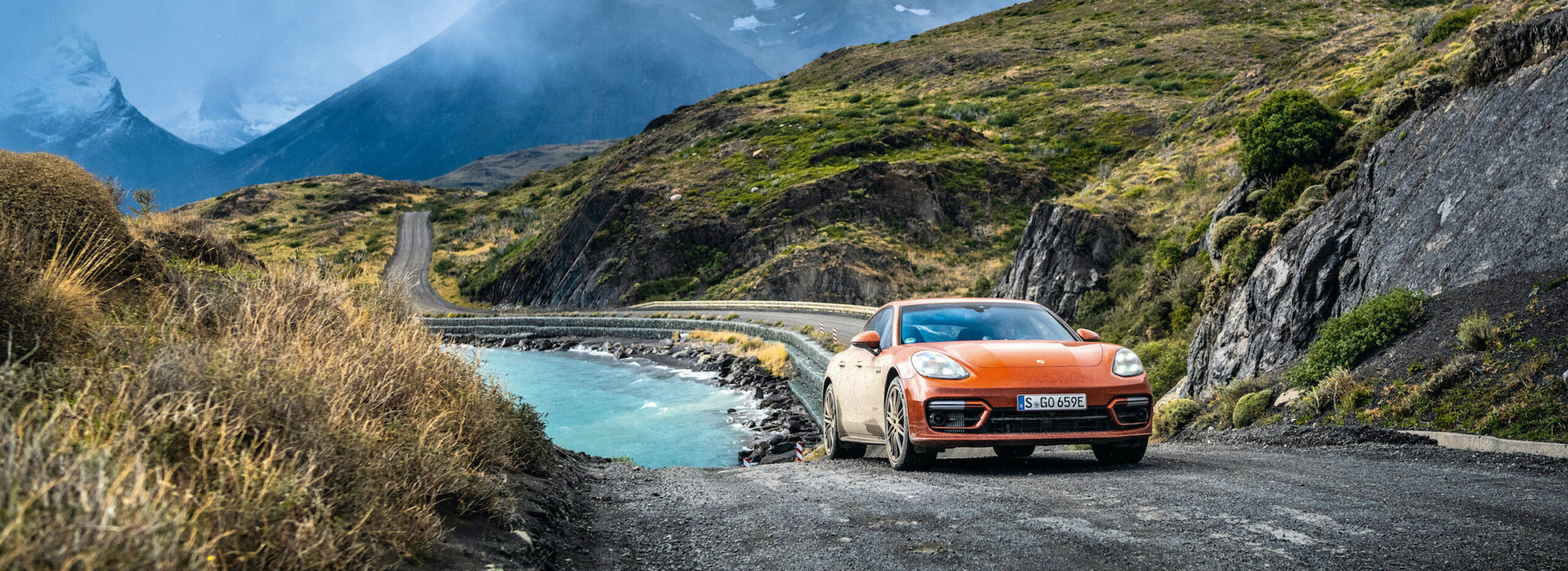
The first and last thing you notice in Patagonia is the incessant howling of the wind. It forces you into a stoop, yanks hard at any loose clothing, and grates against every last centimeter of exposed skin. Its omnipresent whistling extends to the past, present, and future.
It has always been like this, with the wind shaping the creation stories of the Indigenous people who lived there long before Europeans had even dreamed of such remote places. The Tehuelche and Aónikenk believed that the wind was created from the sighs of the first being, before light or land. This force of nature also dominated the experiences of the first western explorers to visit the area. So strong were the gales when Ferdinand Magellan made his way to Patagonia in 1520 that the Spanish government attempted to keep British pirates at bay by announcing that the wind had picked up an entire island and blocked the Straits of Magellan with it.
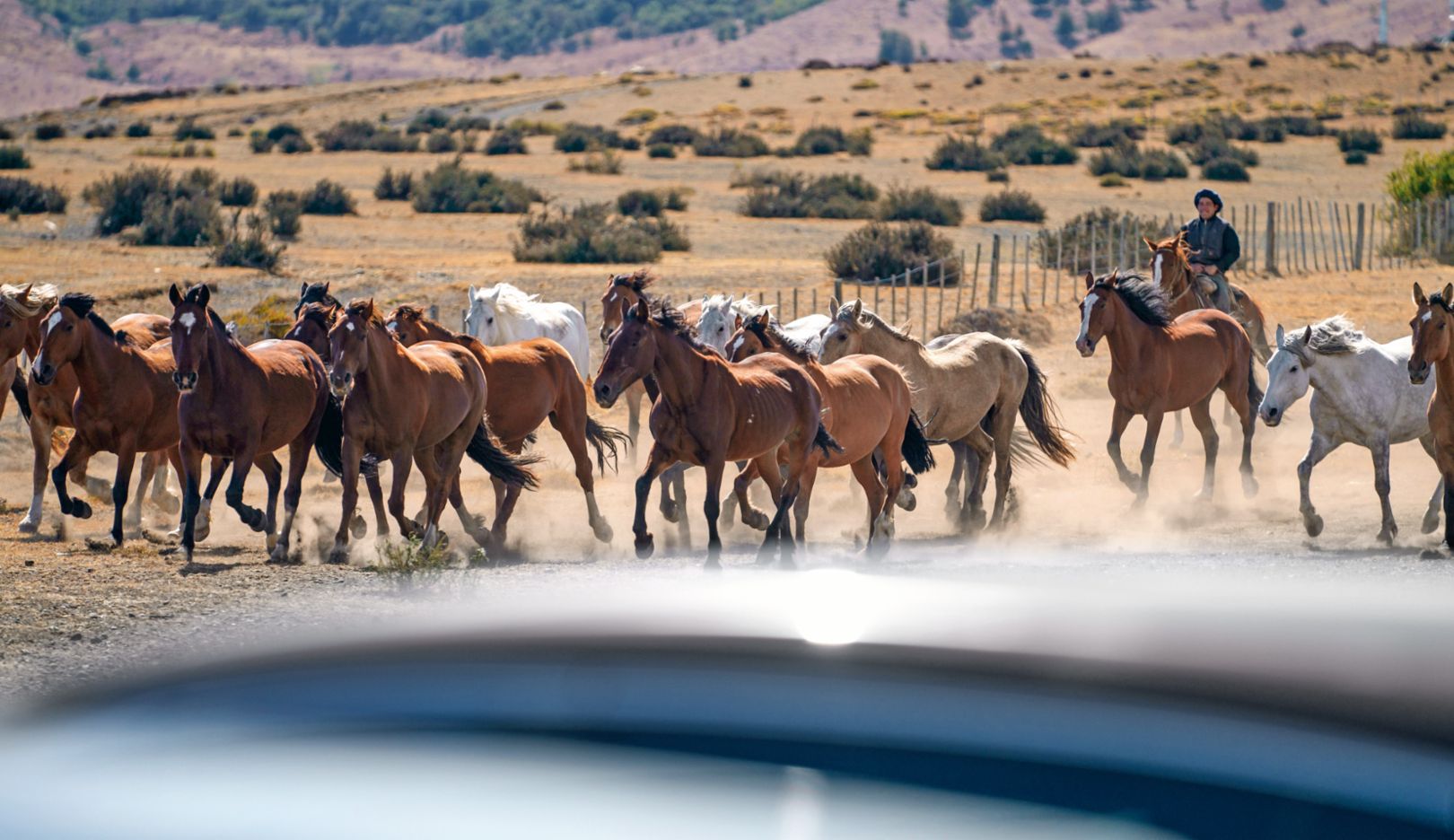
Land of expeditions:
Once discovered by Ferdinand Magellan in 1520, Patagonia evolved into a lodestone for explorers.
“The wind is the tragedy and the celebration of the Magellanic region at the same time,” wrote Chilean poet Gabriela Mistral around 400 years later. “The wind is an old lord of the region that has made his whim of the plain.” In 1945, she was the first Latin American to win the Nobel Prize in Literature – and the Patagonian wind left quite an impression on her, too. “That impetuous wind is a party for the simple mortal, but not for me; it made me very afraid. We all remember that in our childhood we had a certain taste for fear. Fear was something we avoided and, at the same time, sought.”
Whistling its stormy songs day after day, the wind is always there and will be there until the end of time.
Christian Formoso:
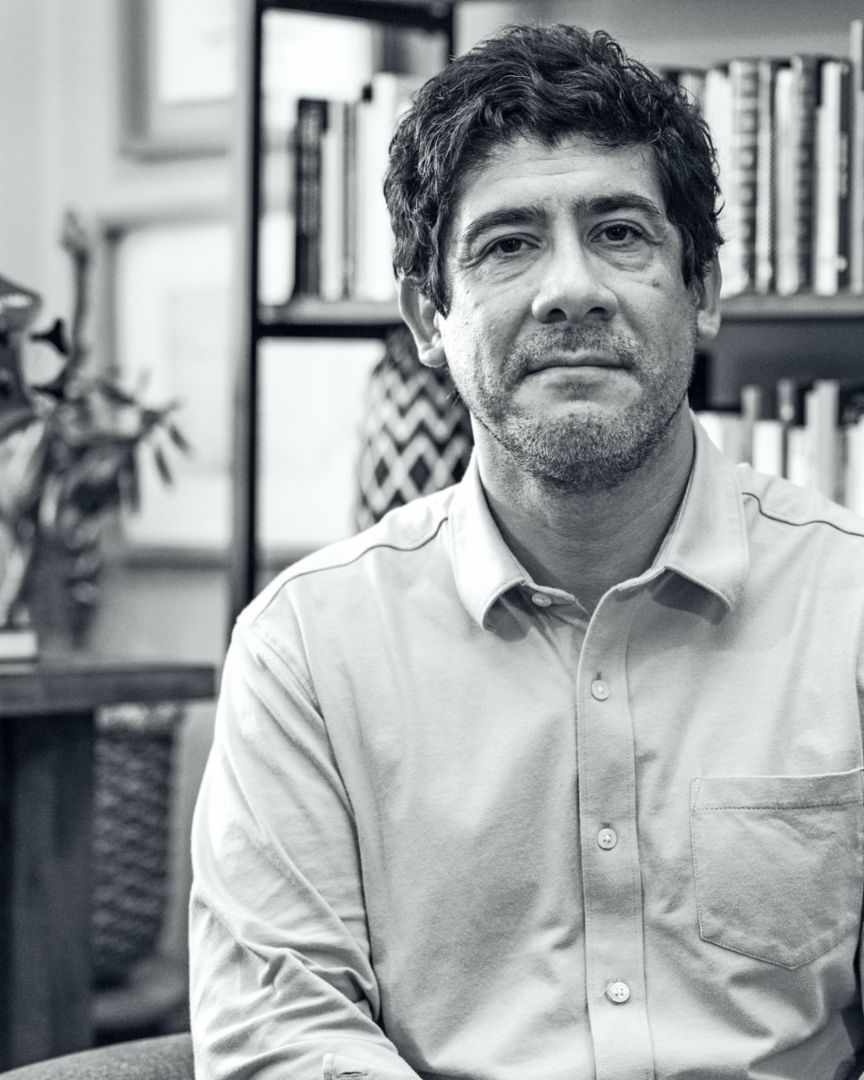
the poet and lecturer at the University of Magallanes lives in Punta Arenas, one of the world’s southernmost cities.
Today, Christian Formoso is a poet and professor at the University of Magallanes in Punta Arenas. Quietly eloquent, he talks about the old belief that the devil controlled the wind. “This region was associated with evil back then,” says the 52-year-old. “The center of the Spanish Empire, Lima in Peru, was portrayed as being saintly, while Magallanes was the opposite. All the good things were there; all the evil things here.”
But much has happened in the 500 years since Magellan’s discovery. From Charles Darwin to Jules Verne, researchers, literary figures, and scientists have made the long journey to the end of the world to explore the barren landscape. Today, we’re following in their footsteps. Our own journey of exploration starts in Punta Delgada, the southernmost point of the Pan-American Highway. Behind us is the short, and at times wild, ferry crossing to Tierra del Fuego. Stretching out ahead is the longest motorable road in the world, which ends in Deadhorse, Alaska, about 23,000 kilometers to the north.
Our means of transport is a Porsche Panamera Turbo S E-Hybrid in Papaya Metallic, which owes its name in part to this extraordinary road. But this is no ordinary hybrid. During our journey, it’s powered by regionally produced eFuels as well as green electricity, two sustainable technologies combined in a single vehicle. This is how we are exploring Patagonia – and, at the same time, the mobility of the future.
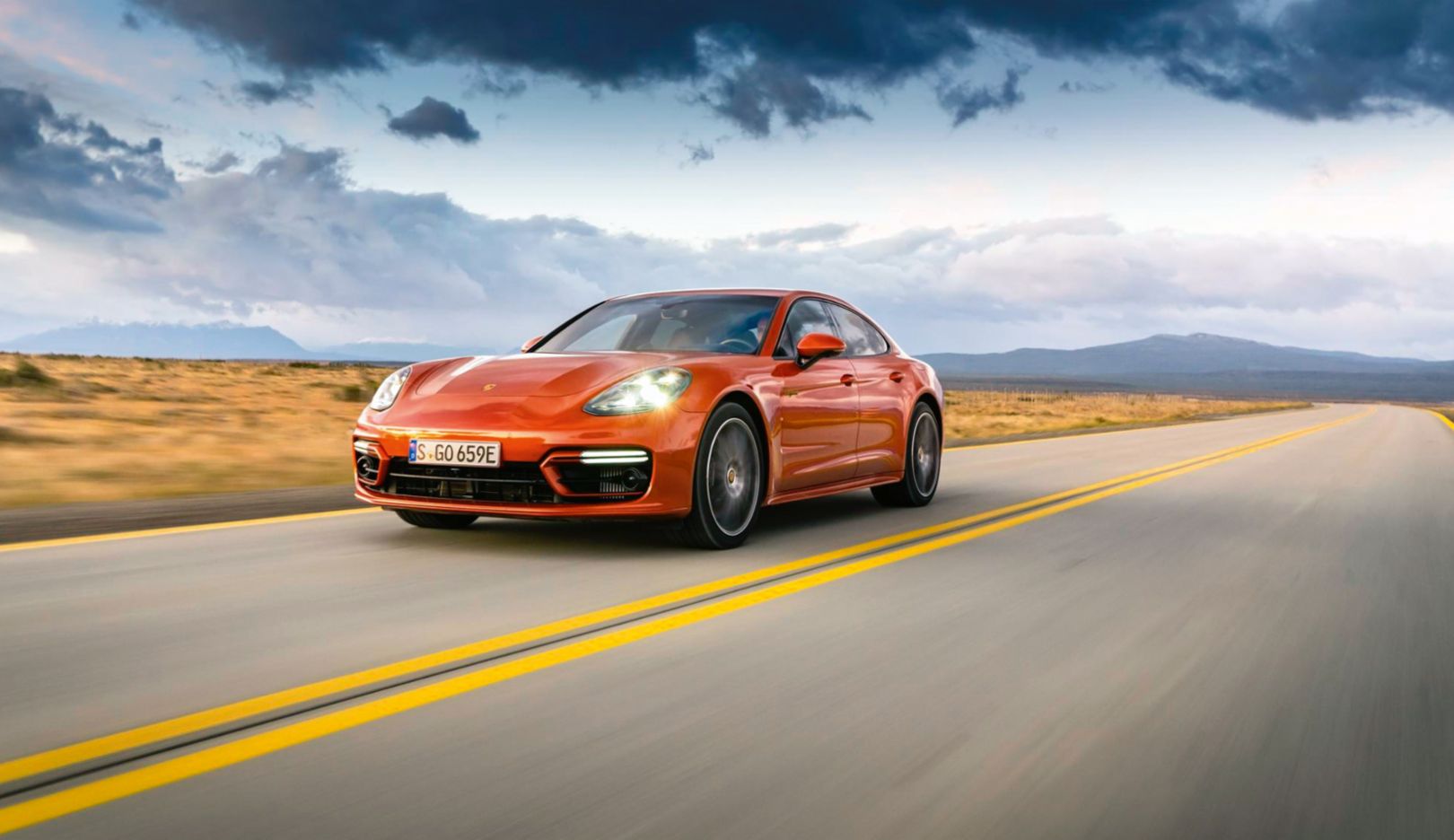
Sustainable transportation:
Powered by eFuels and wind energy, we explore the vast landscape in the Panamera Turbo S E-Hybrid.
After just 16 kilometers, we leave the Pan-American Highway, which heads for Rio Gallegos in Argentina, and drive deeper into Chilean Patagonia. Flatland continues as far as the eye can see, with the occasional relict from the past such as Estancia San Gregorio, an old farm and a testament to the region’s last economic heyday. In the late 19th century, the people who had settled here in this region made fortunes rearing sheep. The buildings of the Estancia San Gregorio were at the heart of a 1,400-square-kilometer estate, which saw its business rapidly decline with the opening of the Panama Canal in 1914. By 1970, most of its operations had shut down entirely, a process that exemplifies the region’s dynamism. But the wind continued to blow relentlessly.
A short drive further on, past a sign warning of the dangers of hitting rheas (the South American cousin of the ostrich), is the intersection with Ruta 9, better known as the Ruta del Fin del Mundo, or the “Road of the End of the World.” It’s here that we head for Haru Oni, the new production facility that Porsche has invested in and that is sustainably producing eFuels in the region. What follows might just be one of the most extraordinary fuel stops any of us will ever make.
Ruta 9:
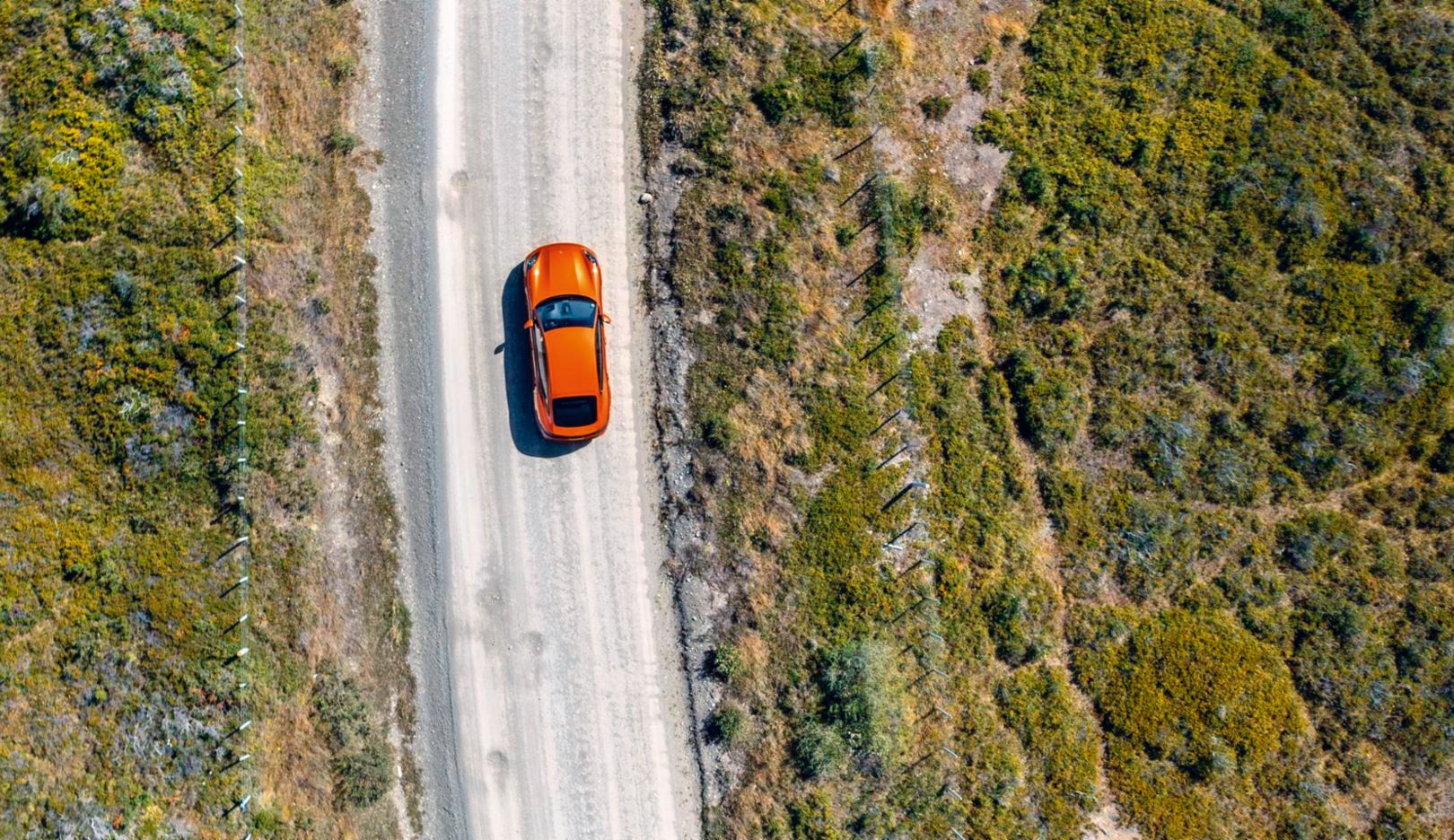
In the Panamera on the Road of the End of the World.
“This project is a building block for the future,” says Tatiana Alegre, General Manager of the operating company HIF Chile (Highly Innovative Fuels). “What we basically do is use the wind to transform water into eFuels. Haru Oni means ‘Land of the Wind,’ and we are here because the wind blows strongly most of the year.” The wind provides a continuous supply of the sustainable energy that’s so important for the production of eFuels. “Magallanes has always been the land of explorers,” says Alegre. “We’re exploring scientific frontiers. For me, Haru Oni is one of the new technological wonders with which we hope to help change the world.”
With the Panamera’s twin-turbo V8 engine (Panamera Turbo S E-Hybrid: Fuel consumption* combined (WLTP) 2.9 – 2.7 l/100 km, CO₂ emissions* combined (WLTP) 66 – 62 g/km, Electric power consumption* combined (WLTP) 24.6 – 24.0 kWh/100 km, Electric range* combined (WLTP) 48 – 50 km, Electric range* in town (WLTP) 49 – 50 km) purring away contentedly and running effortlessly on the freshly produced eFuel, we push on northwards.
Tatiana Alegre:
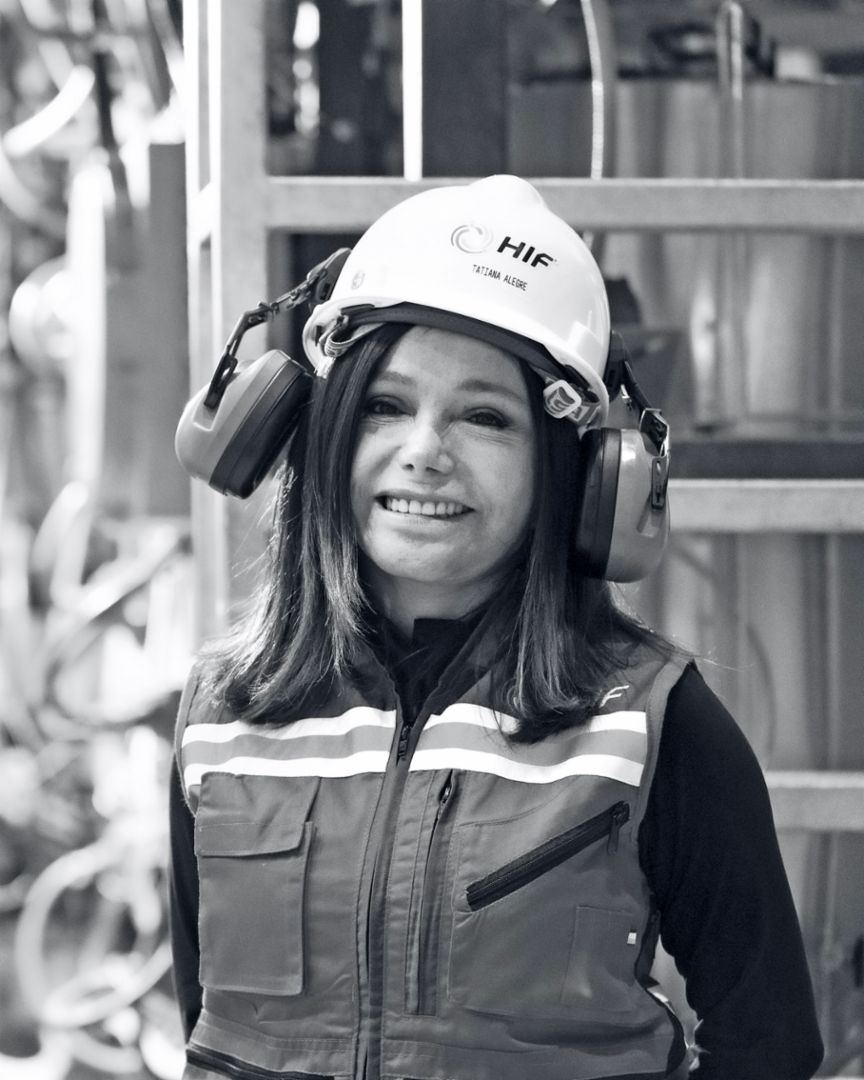
On her scientific journey of discovery, the General Manager of HIF Chile (Highly Innovative Fuels) conducts research into the mobility of the future.
Here, the horizon looks even longer, the roads are as straight as an arrow, and the cloud formations scud overhead at top speeds. We find ourselves on the Patagonian plains that Charles Darwin described in 1833, while circumnavigating the world for five years on HMS Beagle. “The plains are boundless, for they are scarcely practicable, and hence unknown,” wrote the naturalist. “They bear the stamp of having thus lasted for ages, and there appears no limit to their duration through future time.”
Timeless:
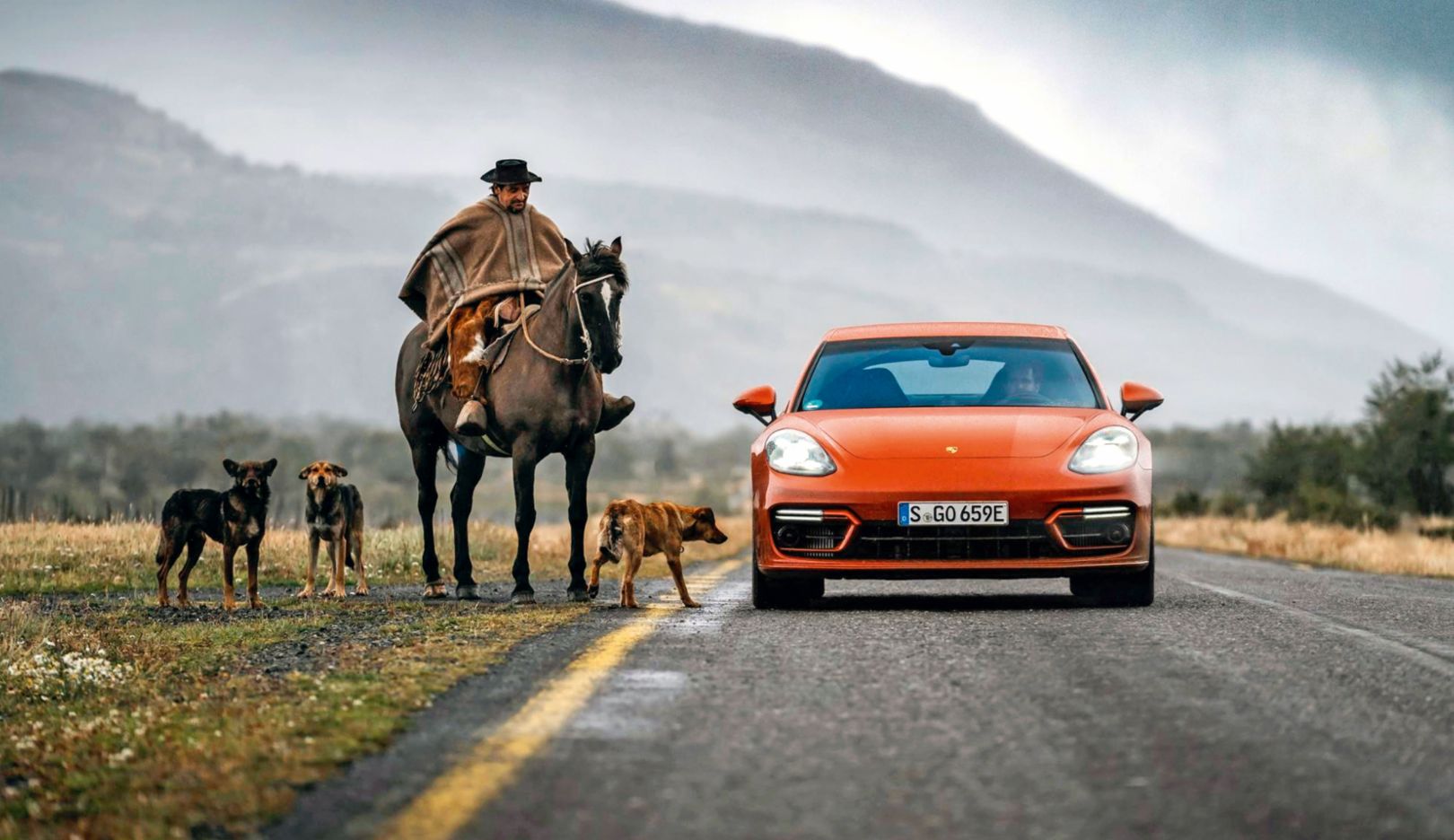
Not much has changed here, but the Panamera reminds us of what the future may bring.
Christopher Dick Leigh:
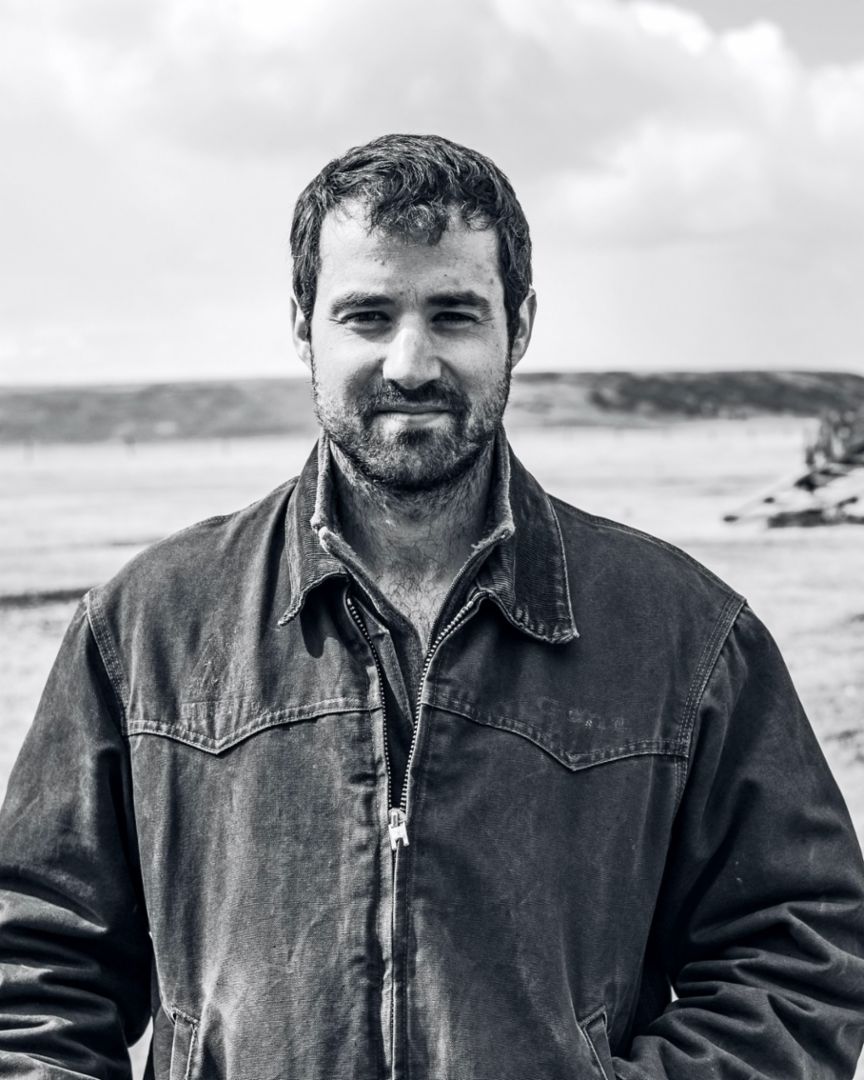
Dick Leigh and his siblings are the fifth generation of the family to run the 12,000-hectare farm, Estancia Río Penitente.
Nearly 200 years later, we traverse this once impassable land and continue along our path through the vast landscape, powered by water and wind. We stop at the Estancia Río Penitente, another farming estate steeped in history, but one with an exciting future. Christopher Dick Leigh and his three siblings have strong ties to their home and are the fifth generation of the family to live there after their great-great-grandparents moved from Scotland to Patagonia via the Falkland Islands. They have radically modernized their 12,000-hectare property and now not only rear sheep, llamas, and horses, but have also turned some of the house into a boutique hotel for the rapidly growing number of tourists visiting the region.
“Patagonia is a special place in every way,” says Dick Leigh. “We think it’s normal to have four seasons in one day and to never know how to dress. But we’re able to see everything differently through the eyes of the tourists, who are always amazed.”
The change that’s taking place now is similar to when the pioneers arrived with the first sheep more than 100 years ago. “That changed the economic system of the region,” explains Dick Leigh. “Something similar could happen now with eFuels.”
We continue northwards, past Puerto Natales and a fjord called Seno Última Esperanza – inlet of last hope. Then we cross the Torres del Paine National Park, where every turn reveals another jagged peak, another glacier, another lake, river, or waterfall in an otherworldly azure or emerald-green hue. Torres del Paine is often called the eighth wonder of the world and is so much more deserving of that appellation than most. If you want to know how wild, how remote, how alien this region is, it was one of the last places where, at the turn of the century, serious expeditions were mounted to find huge animals from the Ice Age that had actually long been extinct. New fossils are also discovered here on a regular basis. In fact, researchers announced the first full excavation of a pregnant ichthyosaur in 2022.
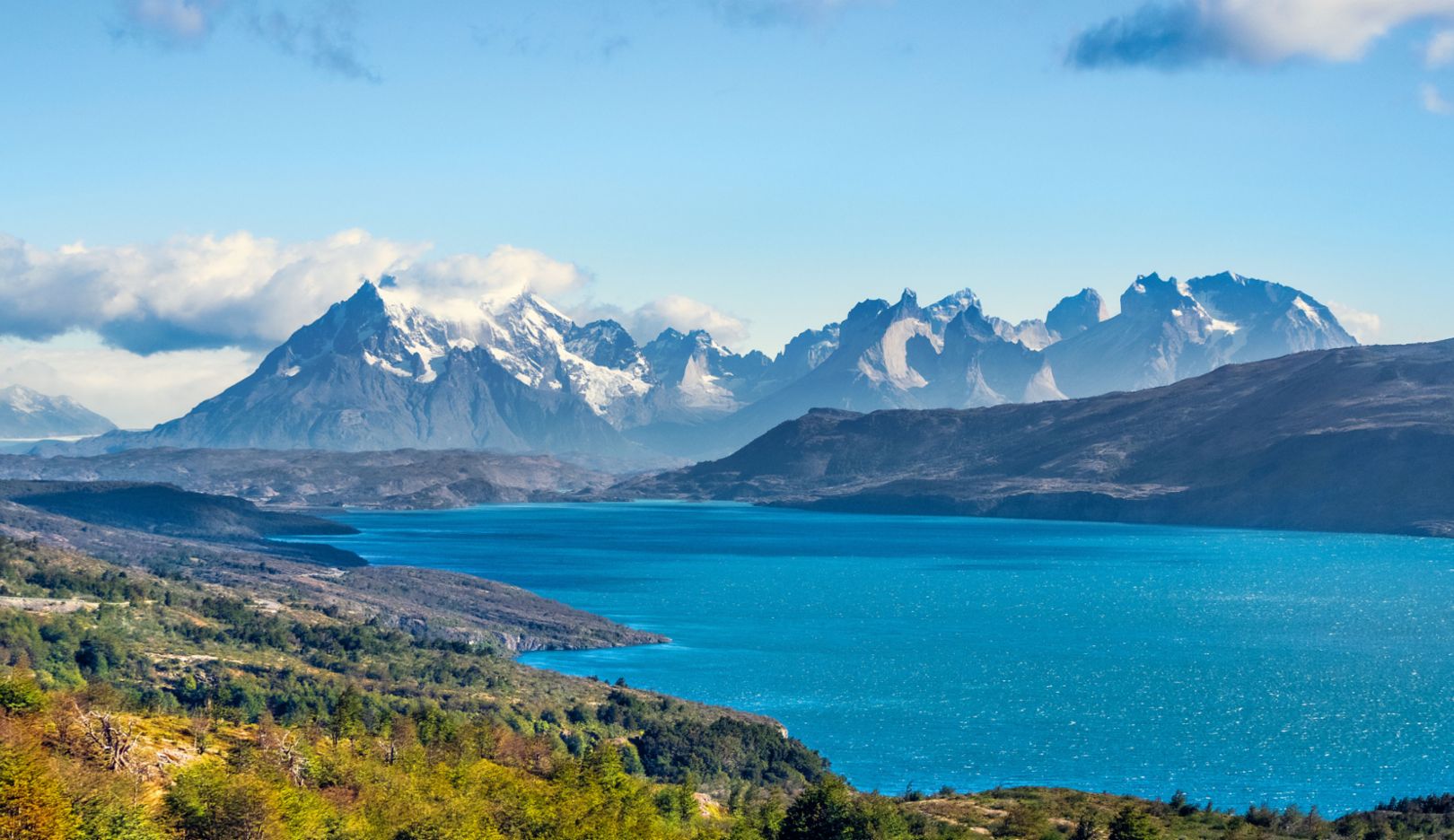
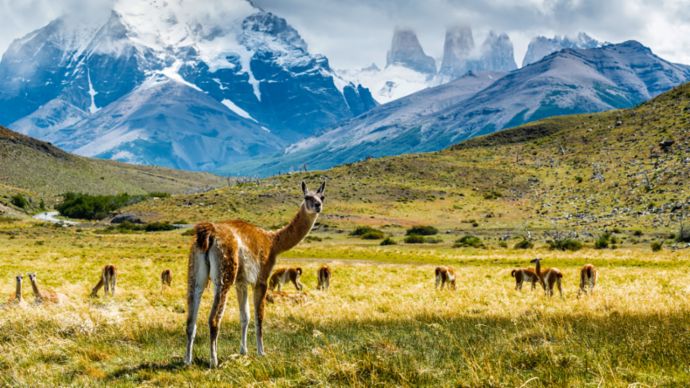
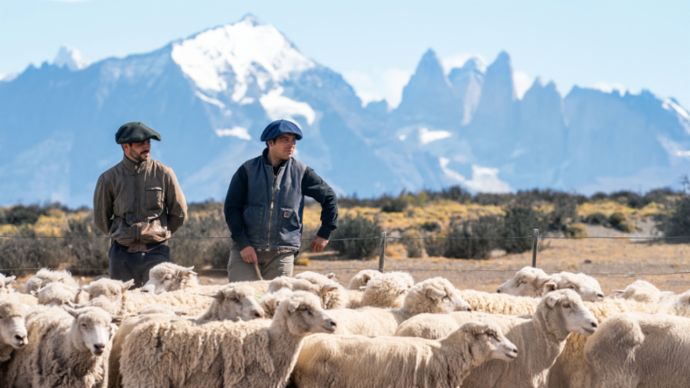
Change:
Livestock breeding has been an important economic sector for quite some time. And a new one is coming with eFuels.
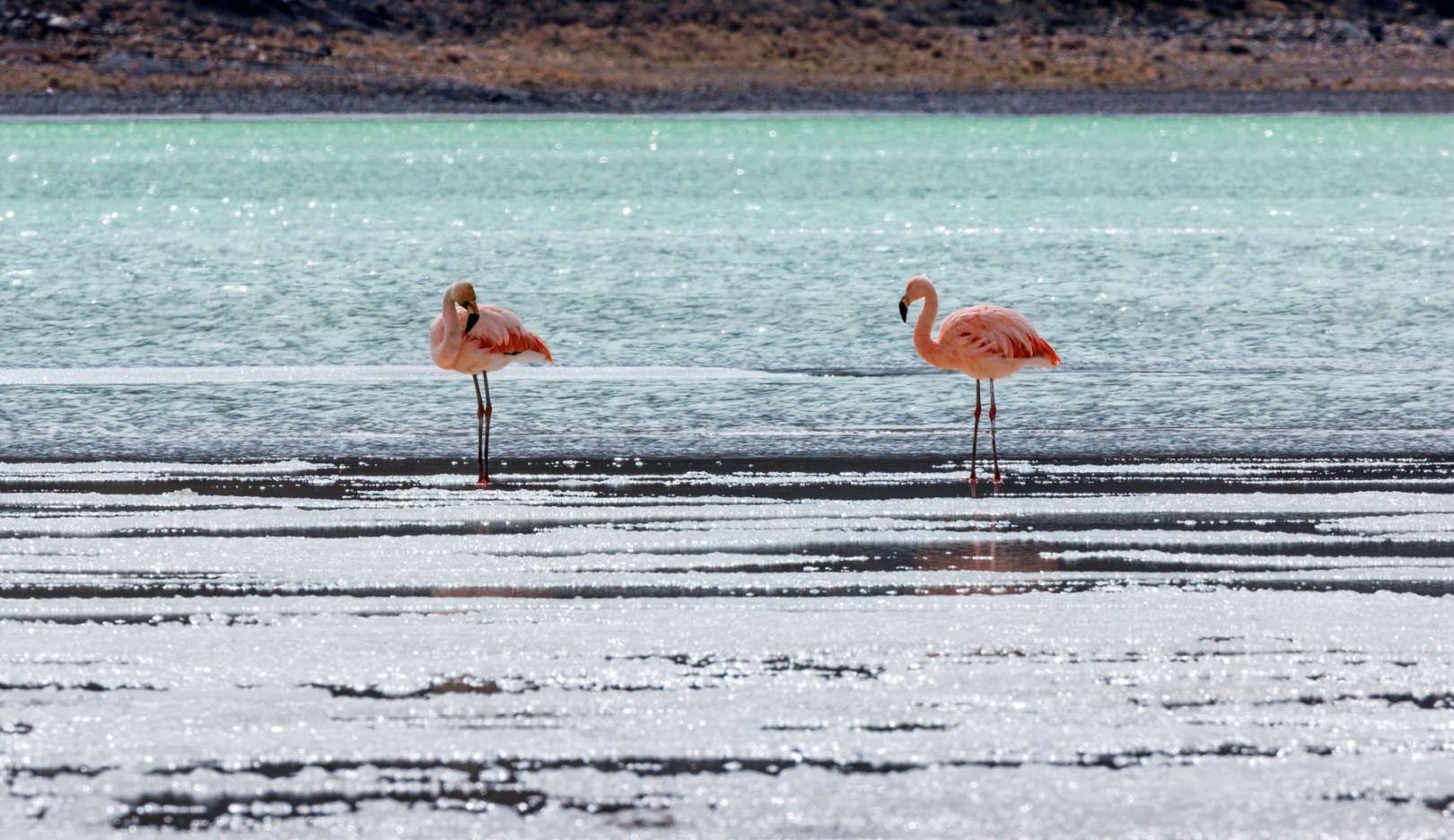
Today, giant Andean condors float effortlessly above the peaks with wingspans of up to ten feet. We stop the Panamera to watch three pumas dragging a freshly killed guanaco – a close relative of the llama – into the undergrowth. Now it appears that we’ve reached the end of the world, where the road simply peters out. Not far off, we see the gauchos of Estancia Cerro Guido on horseback driving great flocks of sheep across the Patagonian plains. There is little difference between past and present here, where time seems to stand still. Much is the same as it has always been. Patagonia was the wind-lashed end of the world – a place of danger that evolved into a stronghold for risky expeditions. Today marks the beginning of a new era of discovery.
Haru Oni:
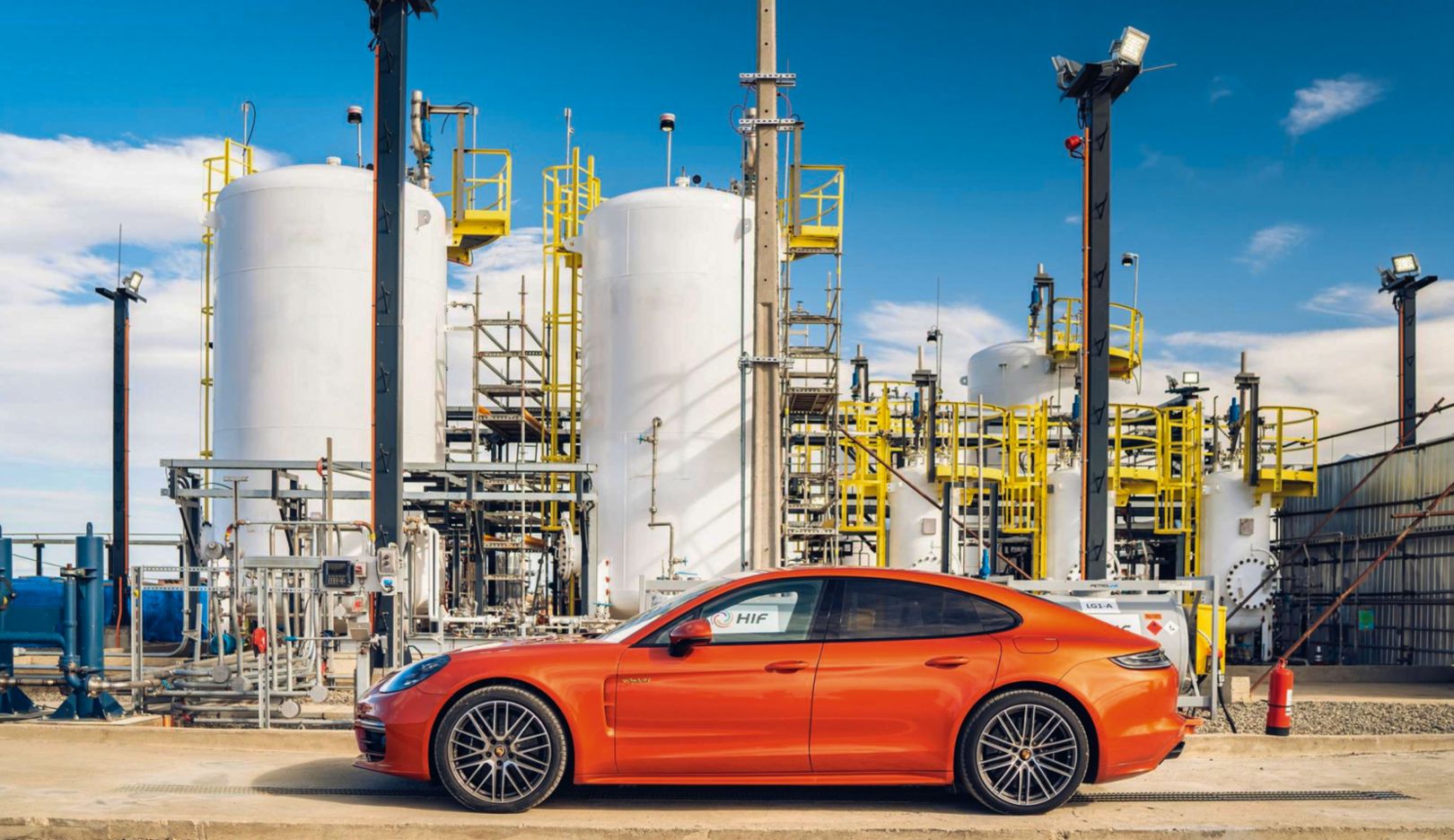
In the pilot phase, the facility should produce around 130,000 liters of eFuel a year.
The wind howls incessantly, but is no longer something to fear, as Gabriela Mistral once did. It represents the drive of the future – and symbolizes hope.
Report by Ben Samuelson for christophorus.porsche.com
Photos by Mark Fagelson & Damian Blakemore




